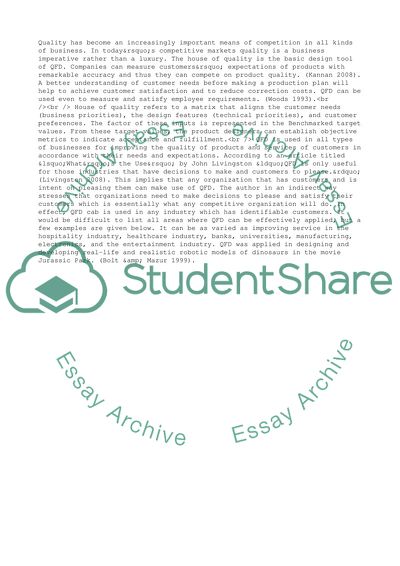Cite this document
(Strategies in Action: How Quality Function Deployment Model Is Applied Term Paper, n.d.)
Strategies in Action: How Quality Function Deployment Model Is Applied Term Paper. Retrieved from https://studentshare.org/business/1714577-strategies-in-action-how-quality-function-deployment-model-is-appllied
Strategies in Action: How Quality Function Deployment Model Is Applied Term Paper. Retrieved from https://studentshare.org/business/1714577-strategies-in-action-how-quality-function-deployment-model-is-appllied
(Strategies in Action: How Quality Function Deployment Model Is Applied Term Paper)
Strategies in Action: How Quality Function Deployment Model Is Applied Term Paper. https://studentshare.org/business/1714577-strategies-in-action-how-quality-function-deployment-model-is-appllied.
Strategies in Action: How Quality Function Deployment Model Is Applied Term Paper. https://studentshare.org/business/1714577-strategies-in-action-how-quality-function-deployment-model-is-appllied.
“Strategies in Action: How Quality Function Deployment Model Is Applied Term Paper”. https://studentshare.org/business/1714577-strategies-in-action-how-quality-function-deployment-model-is-appllied.


